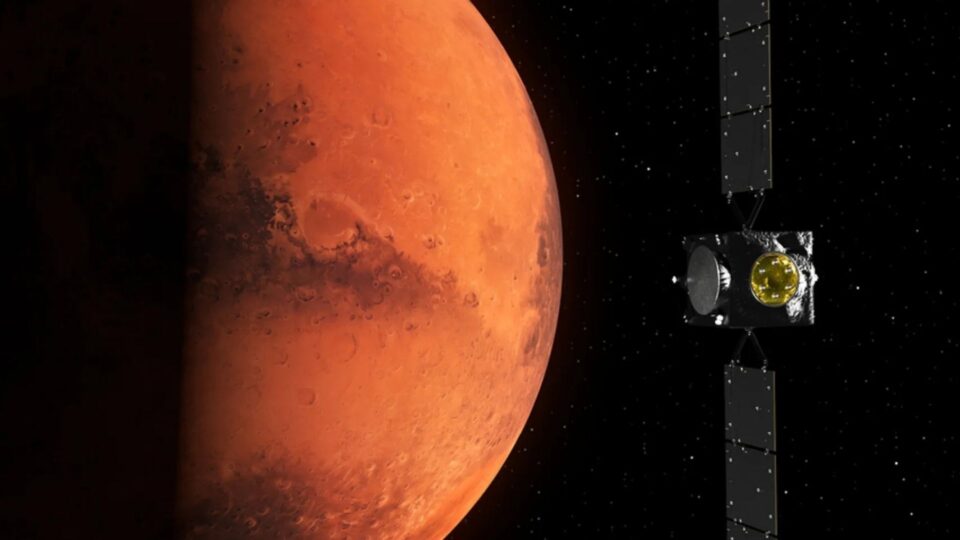The European Space Agency’s (ESA) Hera spacecraft successfully tested its autonomous surface feature tracking system during a high-speed flyby of Mars, marking a crucial milestone ahead of its mission to explore the Dimorphos asteroid system.
Unlike other onboard systems, the autonomous surface feature tracking system hadn’t been tested as thoroughly before launch.
However, scientists were able to operate it for 20 minutes during the flyby.
As Hera passed 5,700 km from the Red Planet earlier this month, it locked onto and tracked dozens of craters and surface features, capturing a new image every 48 seconds using its Asteroid Framing Camera.
Hera’s milestone mars flyby
The spacecraft captured the Red Planet and its enigmatic moons, Deimos and Phobos, marking its first deep-space imaging operation.
“Landmark tracking has been demonstrated before with previously charted features, but tracking unmapped markings in this way is really unprecedented,” said Jesus Gil Fernandez, Hera’s guidance, navigation, and control engineer at ESA.
The test was particularly challenging, as Hera was moving at speeds and distances far greater than it will near Dimorphos.
Despite this, the system immediately identified new features across Mars and continued tracking them in real-time.
Fernandez said that any malfunction could have disrupted Hera’s ability to collect the rest of its Mars science data.
“But thankfully, the system performed really well, giving us high confidence in the phase of Hera’s mission when it will use this technique to autonomously navigate around its asteroids,” he added.
The flyby also served another critical purpose for Hera’s Mission.
By using Mars’ gravity to shift its trajectory, Hera shortened its journey time by months and conserved fuel as it headed toward its target asteroids.
The road to didymos and beyond
After Hera reaches its destination, it will navigate around the Didymos-Dimorphos asteroid pair using a range of autonomous techniques.
Initially, the spacecraft will use Didymos as a reference point before shifting focus on Dimorphos, which it will approach from less than 2 km away towards the end of its six-month investigation phase.
Hera’s primary objective is to analyze the smaller asteroid in detail.
By continuously imaging surface features—such as boulders and craters—it will calculate its altitude and trajectory relative to the asteroid.
The data will be crucial in assessing the long-term effects of NASA’s Double Asteroid Redirection Test (DART), which, in 2022, successfully altered Dimorphos’ orbit around Didymos.
The data it gathers will be crucial in advancing planetary defense strategies, ensuring Earth is better prepared for potential asteroid threats.
Advanced tech
Hera’s vision-based processing of surface features operates through a dedicated core of the spacecraft’s main flight computer, similar to how a gaming laptop uses a separate graphics card.
Additionally, a GMV-built Image Processing Unit (IPU), running on two customized Field Programmable Gate Array microprocessors, is onboard.
While the software to operate this IPU is still being finalized, it will significantly speed up Hera’s vision-based processing once the spacecraft arrives at Didymos in late 2026—holding vast potential for future planetary exploration.
The spacecraft, developed as part of ESA’s Space Safety program and sharing a technological heritage with the Agency’s Rosetta comet hunter, was launched on a SpaceX Falcon 9 from Cape Canaveral Space Force Station in Florida, USA, on October 7 at 10:52 local time.
